Photos: Kay Ellen Gilmour, MD
Website: Kaygilmour.smugmug.com
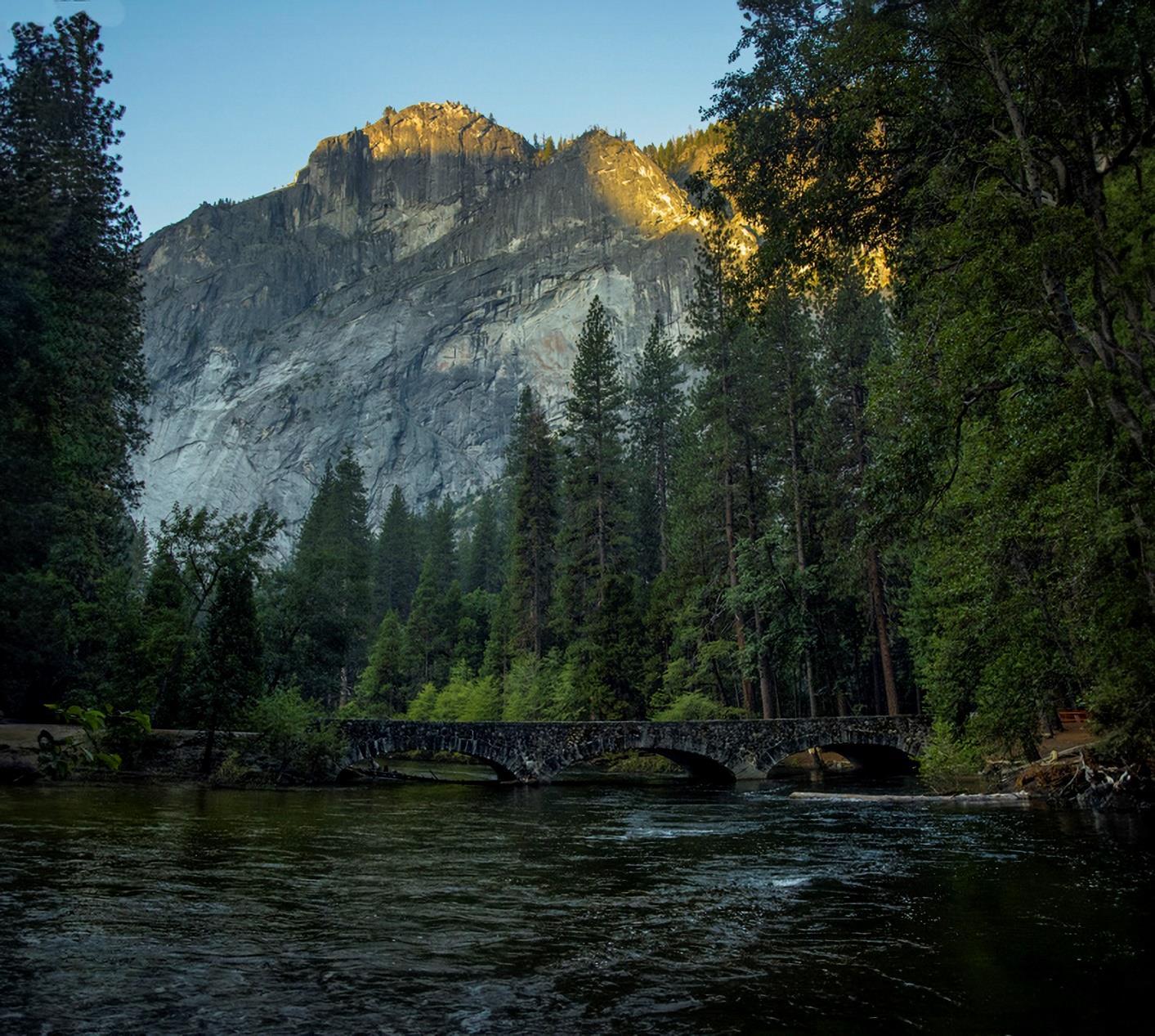
July 2023
A very hot visit to three of our Nation’s wonders. Thanks to Natural Habitat Adventures marvelous staff for this memorable journey.

Photos: Kay Ellen Gilmour, MD
Website: Kaygilmour.smugmug.com

July 2023
A very hot visit to three of our Nation’s wonders. Thanks to Natural Habitat Adventures marvelous staff for this memorable journey.
What a time to make travel plans! A hellish heat dome is covering most of the USA. Paradoxically, Tioga Pass and other roads in the chosen national parks are closed due to last winter’s record-breaking snow accumulations. Yosemite Valley establishes recordbreaking high temperatures. The highest since such records were kept. What were we thinking?
Well, the trip reservations had been made months ago and it was too near the departure date to cancel and hope to get our money refunded. A couple of phone calls to NatHab restored some optimism as we learned that there were many alterations that would make the trip worthwhile despite the heat and snow interruptions.
A very early flight (6 a.m.) from Jacksonville to Fresno, California with a layover in Dallas/Ft. Worth. Smooth flights and early arrival around 12:30 PST. The Piccadilly Airport Hotel said we couldn’t check in until 3 p.m. unless we paid an extra $50 for early occupancy. That statement ruffled our feathers a bit since it was clear that the hotel was not crowded. So, we declined and said we would sit in the lobby until the “Magic Hour” We had had lunch on the arrival flight, so we didn’t even go into the associated restaurant. Finally, I guess the front desk folks got tired of looking at us as we relaxed, used their plugs to keep our iPads powered and read peacefully. At 2:00 p.m., they summoned us to the check-in counter and allowed us to go to our room. The hotel is a bit dated, but it was comfortable and clean, and we spent a good night there. Fresno is the largest city in the Central Valley of Southern California and a major agricultural area producing fruits, nuts and vegetables.
In an oddly generous gesture, we received a voucher for a very nice breakfast in the hotel restaurant. Very soon after we checked out, we received a text from Jeanelle, the NatHab trip Leader, telling us she would be picking us and our luggage up in about half an hour. Some of our fellow guests were arriving on this date rather than earlier as we had done.
We were then offered the option of exploring a local Fresno site: an underground home and garden. Kat, the co-leader of the trip would be driving anyone interested in seeing this strange “attraction” starting in just a few more minutes. We were relieved of our luggage and hopped on the van ready for the first adventure of the trip.
ForestiereUndergroundGardensis the name of this very odd place. A Sicilian immigrant to California in1901, Baldassare Forestiere found himself in Fresno, CA, where the land and the temperatures seemed like his former home. He had a dream of becoming a citrus farmer in this new home. It didn’t take him long to discover how hot the summers are in this part of California, so he decided the best way to stay Cool was to live underground, away from the scorching sun. He had the land, so he started to dig.
Over time, he created, all by himself, a subterranean complex of patios, grottos, garden courts (open to the sky), featuring arches, and rooms, using the local hardpan sedimentary rocks. The stonework is amazing, especially when you remember the primitive tools available to him.
We found the tour through this cave like home and garden somewhat claustrophobic, but it was interesting to see the various rooms designed as sleeping quarters, a kitchen, dining room, and even a library. There were healthy citrus trees and other plants thriving underground but beneath the carved-out holes in the roof. And it was cooler underground than above it on the day we visited when the temperature was in the high 90s. It was an interesting visit while we waited for the rest of the travelers to start on the 70+ mile drive to the Tenaya Lodge on the outskirts of Yosemite National Park.
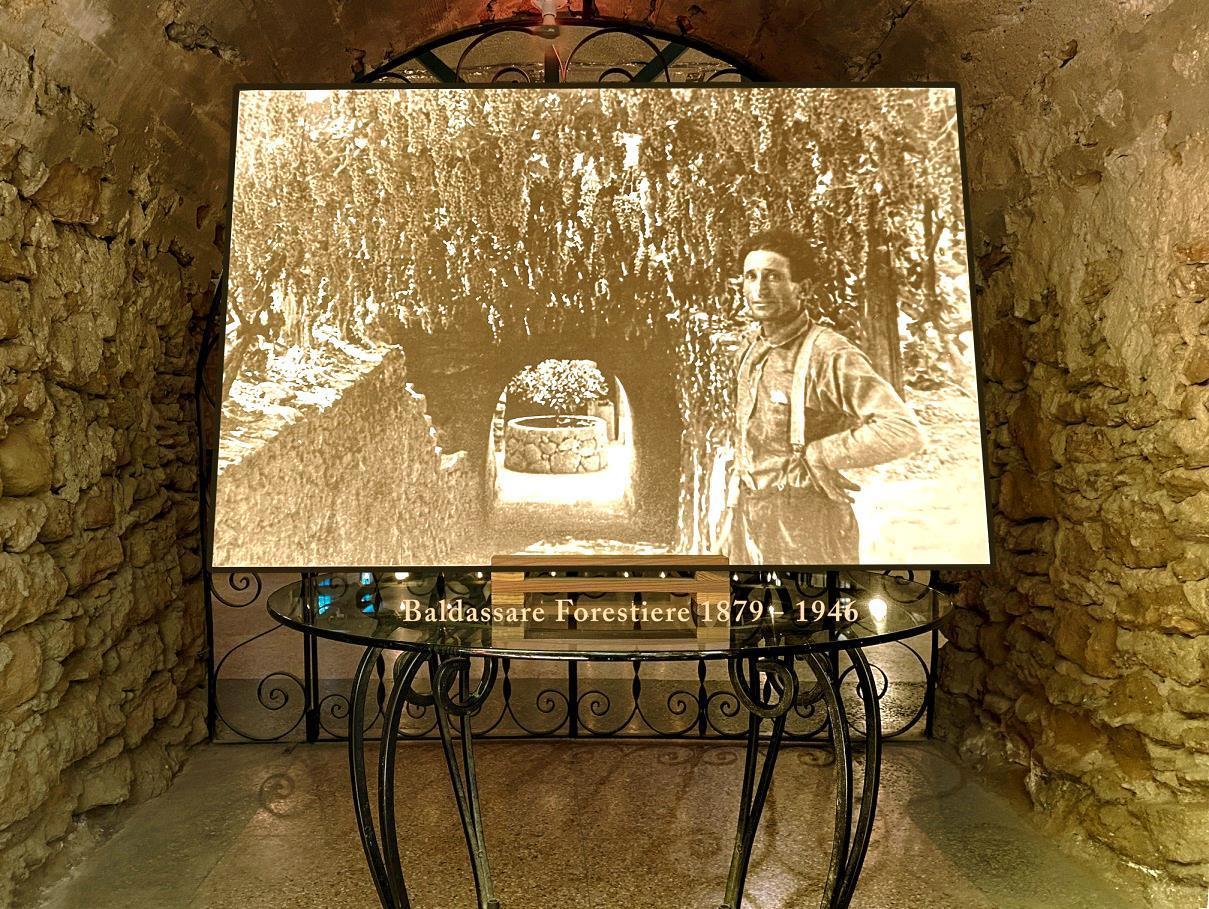
NatHab supplied two quite comfortable Mercedes vans to transport the group everywhere. There was a family who made up most of the travelers, so they filled one van. Kay and I were with a married couple and one lone man. The division worked very well except that we did not get to know the family members as we did with our fellow van fillers. But that was natural because theirs was a family outing where they could all enjoy rare time together since they came from different states to land in Fresno.
The scenery between Fresco and Tenaya Lodge was not particularly interesting. Between the extreme heat and lack of rain, most plants looked a little droopy, even the desert palm trees. The grasses did produce the golden hills of California look, but the overall appearance was of scorched earth. We could tell that our road ascended the foothills of the Sierras as our ears kept popping as we rose.
There were a few very small towns along the way as well as some gas stations and tourist pull-offs. Since NatHab provided water and drinks as well as snacks, we did not need to stop except for what is euphemistically labelled “nature stops.” The journey took about one and a half hours.

TenayaLodgewas comfortable and fairly full of other tourists, and we spent two pleasant nights there adding to the crowd. It is apparently a well-known mountain lodge which caters mostly to Yosemite National Park visitors.
And this is where the “wee” of this trip journal began. We spent time outside of the hotel looking for very small things for Kay to photograph as part of her new interest in macro photography. Since there were lush flower beds and lots of greenery decorating the Lodge’s outdoor area, we were seeking insects, butterflies, and bees: the tiny creatures.
Surprisingly there were not as many such critters as we expected.
But we persevered and Kay did get some close-up photos of bees and flys

From Tenaya Lodge, we explored the famous Mariposa Grove of Sequoias as well as the area around the old Wawona Hotel. Mariposa Grove holds 500 specimens of these ancient and enormous trees. The Grove has been a national preserve since President Abraham Lincoln signed “The Yosemite Land Grant Act” in 1864 which also protected the Grove as well for public use and enjoyment. In 1890. Yosemite was named a national park and the Grove was officially made a part of it.
We made a 2-mile easy hike to the first of our “WOW” experiences on this trip: we ended the hike at The Grizzly Giant a 3000-year-old Sequoia. This is a true colossus: its height is 209 ft., its estimated weight is 2 million pounds akin to the weight of a tower of 145 elephants! The Grizzly Giant is the 26th largest tree in the world.
Before taking that memorable hike, we heard a very interesting lecture on the importance of fire in the life cycle of sequoia trees given to us by a ranger named Lexie. She was so passionate about these trees that her enthusiasm was infectious. She explained first that these mammoth trees start life in a very small pine cone with a seed the size of an oat flake. That in itself was staggering to contemplate. Further, she informed us that these amazingly tall trees have no tap root to sustain that tremendous height and weight. Their trick to staying upright is like the lyrics of the song “Lean on Me.” She pointed out to us that these trees always have at least one close neighboring sequoia, and each depends on the other by creating intertwining surface roots. That gives them their stability and explains why visitors are no longer allowed to walk up close to these trees to spread multiple arms around their girth. Too many tramping shoes and boots can damage these necessary anchors.
Though the National Park tries to control fires in the area, fire is an important phenomenon in the cycle of a sequoia’s life. Their spongy 2-foot thick bark is resistant to all but the hottest fires. And the small pinecones depend on fire to burst them open to release those tiny seeds. Though many seeds are disbursed, the germination percentage is very small. Lexie stressed the importance of every single living tree.

The main way to prevent really hot fires in the grove is to clear out the understory of plants and smaller trees like Silver Pines. When prescribed burns are planned, the NP Service always gets negative feedback from the public that doesn’t understand the science behind this necessity. So, that is why rangers like Lexie give these informative talks to visitors, trying to get the message out that prescribed burns actually benefit the BIG trees more than any other single thing that human beings can do for them.
I should point out that in the Grove the temperature was not all that uncomfortable, but when we drove over to see historic Wawona Hotel and the associated Pioneer Village, reality returned. It was really hot again. Who says shade trees don’t help the world stay cooler?
TheWawonaHotelis right out of the Victorian Era: even today the elegant rooms with their period furniture offer no telephone service, no internet, and no TVs. It was built in 1856.
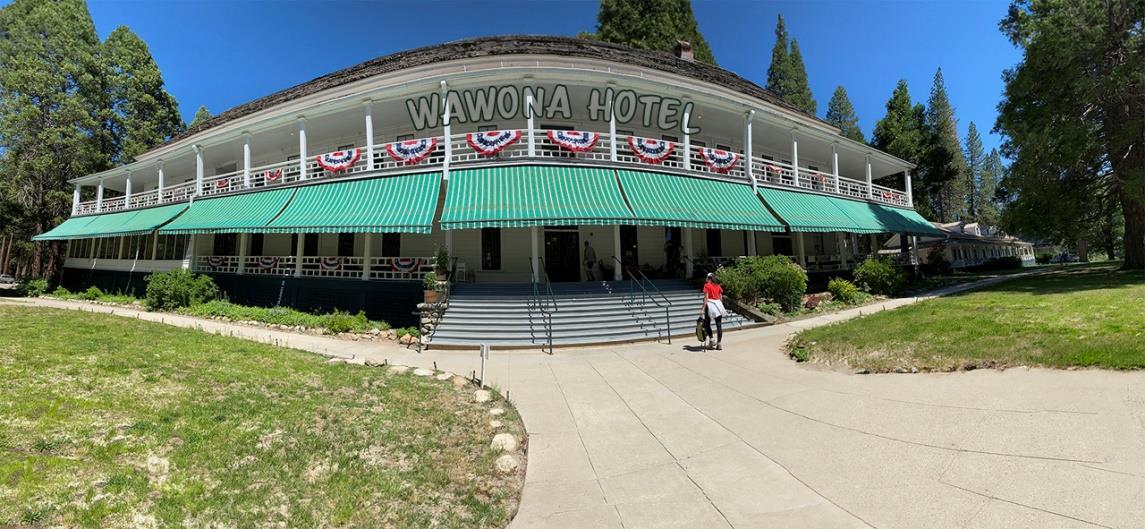
It operates seasonally and offers close proximity to Yosemite NP as well as Horseback riding, golf, fishing and evening entertainment. From the l950s and 60s, it has also provided a home for the Yosemite History Village. Twelve old buildings were removed from Yosemite Valley and dotted around the grounds of the hotel. There is the Cray Barn which was never actually a barn but a garage for machinery and carriages.
There is the blacksmith shop still staffed by blacksmiths who continue to create iron items. Then there is the newest installation, the Chinese Laundry, which offers a glimpse of the life of California’s immigrants from China. And of course, there is a powder room which doubles as the jail, should one be needed. No one would willingly want to be housed in that tight and obvious hot spot.
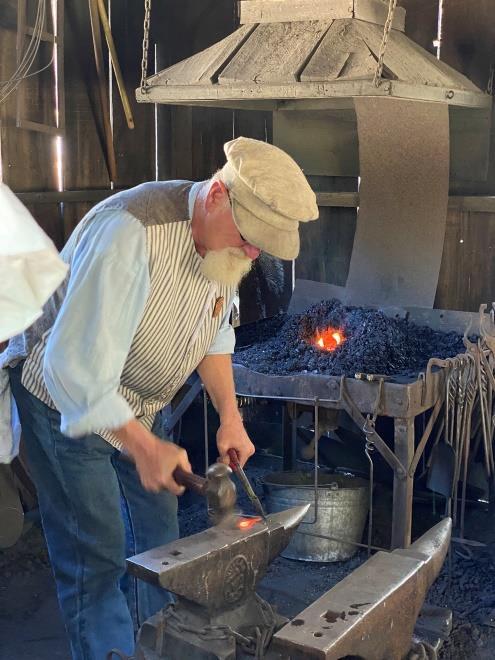
The old covered bridge took horse and carriage traffic from 1857 to 1931. Now it provides a crossing of the Merced River for visitors to see pioneer buildings of the Yosemite History Center. Or enjoy an alfresco picnic on the banks of the currently roaring river such as we enjoyed. Sharon, our chef and meal arranger, set us up in picnic tables with several types of pizza and drinks of our choice. There were always tasty desserts, like chocolate chip cookies and fruit tarts.
The most enjoyable events, besides the lunch, in the Village were provided by Buckshot, an older gentleman who has worked for the park and the hotel for more than 50 years. He was a source of many good stories of life in the earlier days. He also cares for the horses and their carriages and offers rides for visitors. When cold weather comes, he takes all the horses home to his own ranch and cares for them there. He had just been honored with
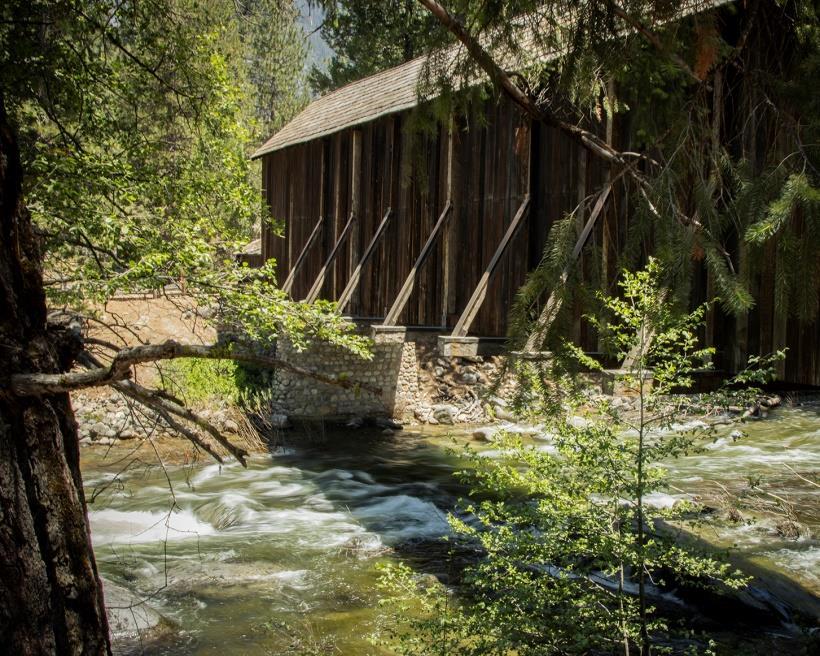
some sort of gala by the hotel and the park for his years of service and he was very proud of the pictures taken during the party.
The second enjoyable encounter was with the two blacksmiths. One of them was the raconteur extraordinaire who spun stories about how blacksmiths had made life easier for pioneers by creating so many useful tools and implements. He showed us some chain pieces he and his partner had just created and also some very delicate “salt spoons” featuring tiny “bowls” because salt was such an expensive and rare commodity that no one should take more than one spoonful. He played a game with us and somehow Lois won one of the “wee” spoons.
Since I keep emphasizing that we saw very little wildlife, I must step back and admit that we saw a few specimens on the walks in Mariposa Grove and around the historical buildings. The most amusing creature we saw was a rather plump gray squirrel sitting on a fence looking around with the vigilance most of these creatures exhibit. When he saw us, he scampered down the post and hid in the weeds and grasses beneath the fence. When he felt safe, he came out of the greenery and began rapidly digging a hole in the sand. Then he turned around with his tail to us, squatted down and urinated. When he was finished, he began quickly covering the spot, just like a cat. Never have either of us ever seen a squirrel anywhere in the world perform that behavior.

Some of the birds we saw along the way were an acorn woodpecker, brown-headed phoebe, Stellar jays, big ravens and even some vultures soaring overhead We heard smaller birds in the underbrush, but they were very quickly completely hidden in the foliage.
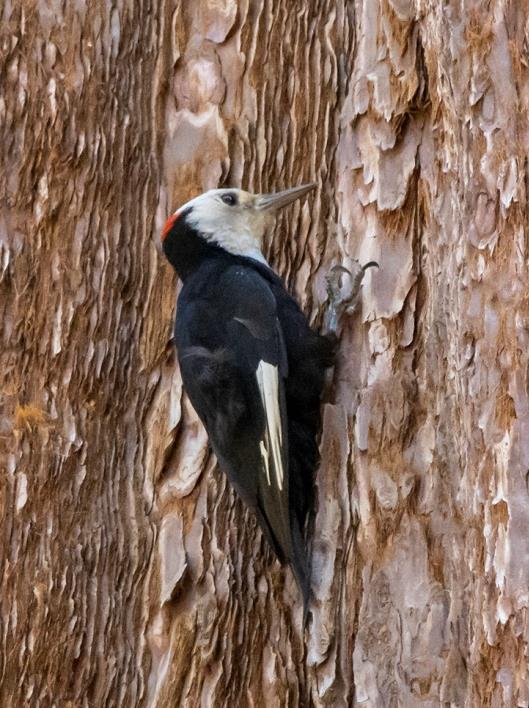
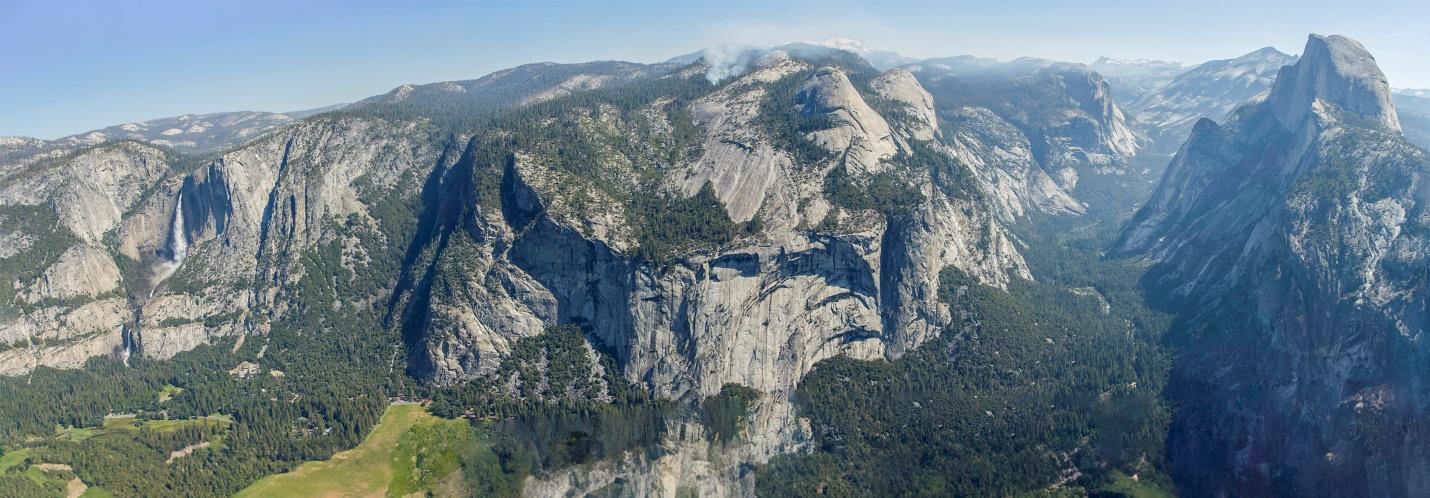
We left Tenaya Lodge in the early morning after packing our lunches from the buffet of treats Sharon had arranged. We drove directly to Glacier Point which is the most popular spot in all Yosemite because of the wide & wonderful view it affords the first time (and all repeat times too) visitor of the incredible features of Yosemite Valley. From this featured stop, the photographers, the gawkers, and the overwhelmed can see El Capitan,
Half Dome, upper Nevada and lower Vernal waterfalls, green forests below, and overarching blue sky. The first time we ever saw this view (many years ago) we were speechless as are most first time visitors. However, this first look was cemented in our memories because right after we stood there stunned by the majesty, a carload of tourists drove up behind us chattering in Japanese Almost at once, a young man careened out of the car and ran up beside us. After hearing only his language from the car, we were delighted to see him spread his arms and shout “WOW” in perfect English.
Our visit this time however, though still the same “WOW” scene was dismayingly different. Not because the valley view had changed but because the astounding number of people already there created a much different experience. When we visited before, the pull-off was just a gravel wide spot in the road and we were the only people there until the Japanese car pulled up. But this time the whole approach was different.
There is now a parking lot and paved paths leading to the view. There are restrooms, and rock walls guiding the visitor onward. There is even a short tower to offer another viewing angle. Glacier Point was teeming with people of all ages, sizes, ethnic backgrounds and a Tower of Babble of many languages. So much for a quiet approach to the astounding view and a wilderness feeling was impossible. We are so happy that we visited long ago and had
the whole experience to ourselves selfish I know, but when you feel awed by something, it’s rewarding to digest it and enjoy it quietly and semi-alone.
Of course, this was now to be our time in the park. Since we had no intentions of trying any backcountry hiking, we quickly realized that this visit to Yosemite was more similar to crowded Disney World than our first one when we seemed to have the park to ourselves. Even our second visit a few years later was nothing like today. There simply were not so many people with us. No wonder the NPS is working on an acceptable method of keeping crowds less enormous. Perhaps they will try timed ticket entries or putting caps on the numbers of people allowed in at any one time. That will anger people and disappoint folks coming from afar without knowledge of the changes. Even while we stared out at the view between other people’s heads, we heard that the rangers had closed off the parking lot and the approach road until some people left the viewpoint. We could imagine how angry and disappointed folks in the cars denied entry were feeling.
I recently watches a Washington Post Podcast interview with the new Director of the Park Service, Chuck Sams who is the first indigenous person to hold this position. He is wellaware of the problem of crowds in the most popular parks. He mentioned some possible remedies but recognized that none of them are without problems. He spoke about the difficulty of communication with the population of the USA as well as foreign nations about changes in admittance and capping policies. It is a really sticky situation, but it appears that right now we are “loving our parks to death.”
After viewing Glacier Point, the group divided with those who wanted to hike to Sentinel Rock and those of us who did not want to do that. Janelle took Calvin, Linda, Kay and I to for our own tour.
 WashburnOverlook&TunnelView
Washburn Point
WashburnOverlook&TunnelView
Washburn Point
Our first stop on the way down Wawona Road was for a short picnic at the Washburn Point Overlook and a look at the splendid iconic view of Yosemite Valley at Tunnel View. Traffic waiting to get up Wawona road to Glacier Point was backed up for over a mile.
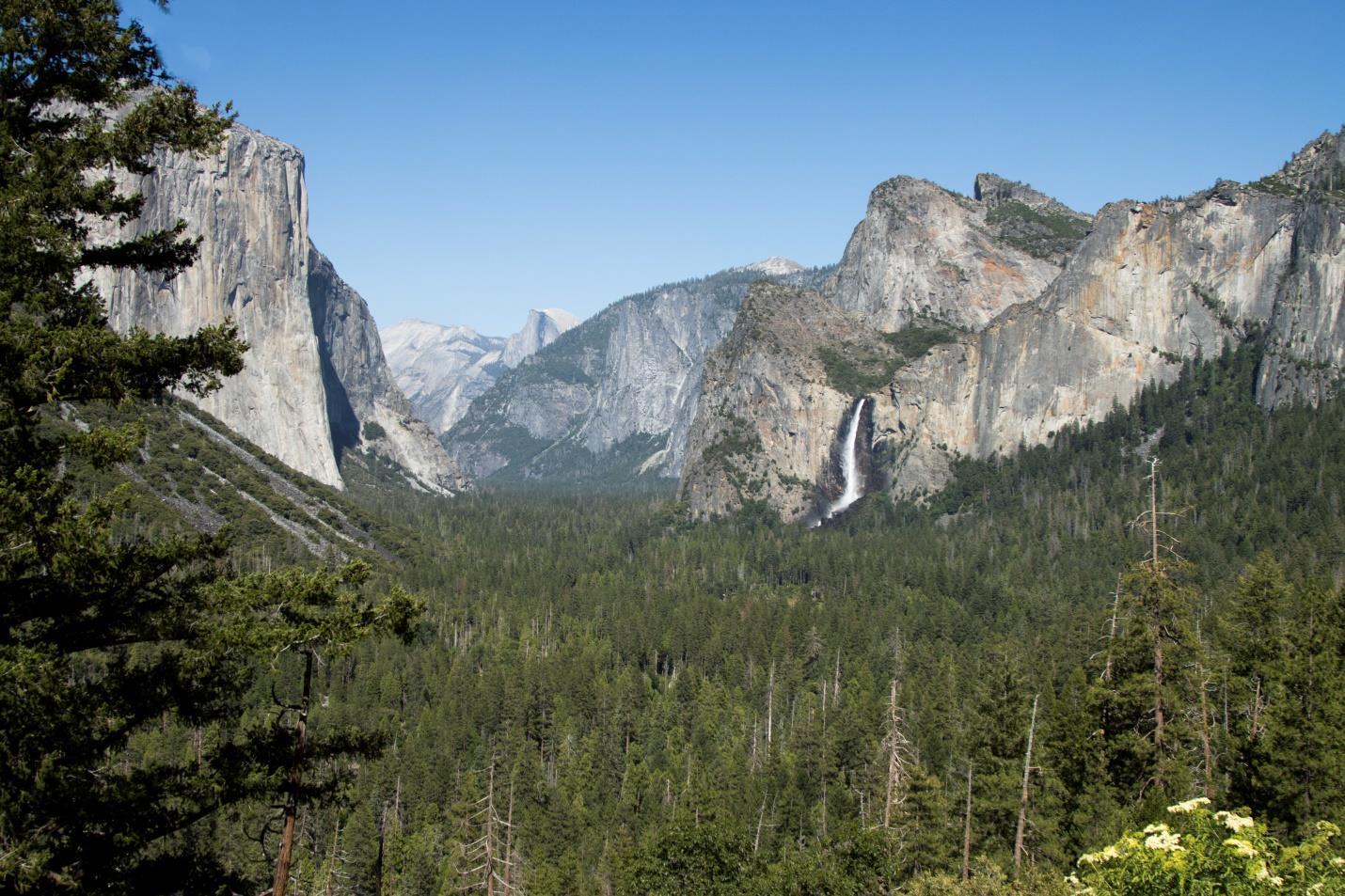
BridalVeilFalls
In some seasons, the Falls are wispy and slender (thus the famous name), but this year with all the snow which has fallen in the park, Bridal Veil was a tumultuous crescendo of water rushing down the cliff face. There was spray strong enough to reach our faces as we stood at a viewing point at the foot of the falls. The wind was blowing so hard that at times the water was blown back up against the still falling stream. The wind also created a much wider curtain of water as it countered the tumult.
The walk up to the viewing point was quite easy and also full of other tourists eager to approach the famous scene. We had never seen the falls that full in our earlier visits to Yosemite. So, this time, Bridal Veil Falls was a bigger “Wow” than we had ever seen. Even the rangers who have been in the park for years at a time have been stunned by the amount of water crashing down the rock face.
AhwahneeHotel
It was time to settle in at the Ahwahnee Hotel made famous where Ansel Adams lived for several years. The hotel was completed in 1927 and has experienced multiple renovations and repairs since it first opened.

It is still a gracious historic “pile” whose kitchen is currently under renovation. However, we enjoyed good meals there despite the kitchen’s having been temporarily moved further back on the property.
 Bridalveil Fall & Merced River
Bridalveil Fall & Merced River
The rooms were comfortable and even a little elegant. The first floor opened onto a large patio with views of the very deep property. The fun here was watching the squirrels running back and forth into the building looking for dropped morsels. The service staff had long since given up keeping them out or even shooing them away went they brazenly rushed inside. They are the California Ground Squirrel, and they are cheeky little creatures indeed.
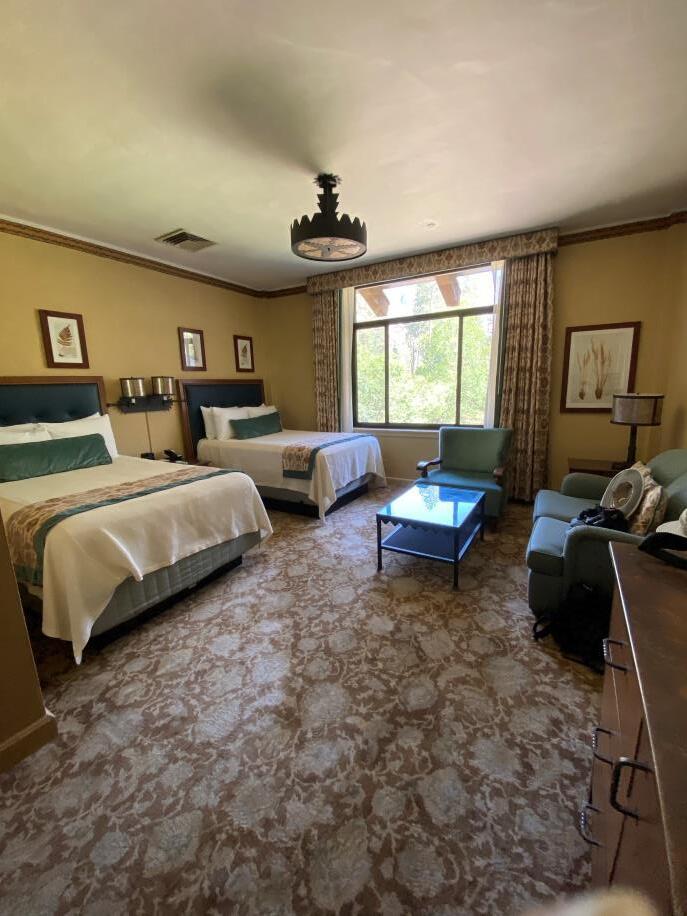


Because our nephew is an elevator mechanic/instructor, we were most interested in the old elevator on the ground floor. It was very difficult to get any information about it because most people we questioned just shrugged and said they had never been asked about it before. Anyway, as best we could gather, this fancy on the inside elevator is an Otis and was installed around 1928 and has been running ever since. There is an Otis elevator repair shop in El Portal, just outside the park, and that company is called when anything goes wrong. On the inside the elevators doors are burnished bronze, the ceiling is a stained glass installation, and the flooring is carpeting matching other carpets in the hotel.
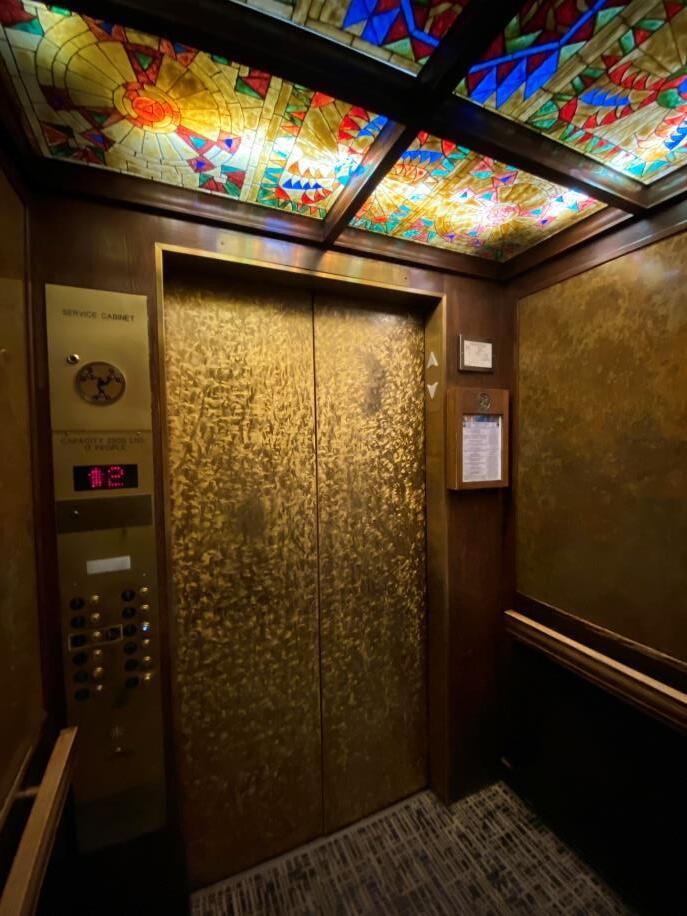
It did groan and rattle a little during our stay, but then it decided to really act up. Luckily, we were not on the antique machine when it decided to lie down on the job. The unfortunate couple who were inside could not exit. Not only did the elevator stop elevating or descending, no buttons controlling the machine worked. So, instead of calling the Otis shop outside the park, the Valley firetruck was summoned to the Ahwahnee, and the firefighters had to use the “jaws of life” to pry the doors open and set the captives free. Then the service elevator right next to the guest elevator decided to malfunction as well. We left the hotel before all the repairs were made so we did not get to talk with any of the elevator mechanics.
There is a very long backyard behind the Ahwahnee that Kay and I visited most every evening, hoping to see a mule deer that others claimed to have spotted. While we never did see the deer, we did have a really good “WOW” there one night. We were walking over the bridge across the Merced and realized that the sun was going down in front of us. So, we got off the bridge and clambered down to the river shore. There was already a fellow with the same intention: photographing the sunset on the mountains. It wasn’t long before the light show began to play on the granite faces of the mountains. We definitely consider that evening a “WOW” even though we did not see a single creature.
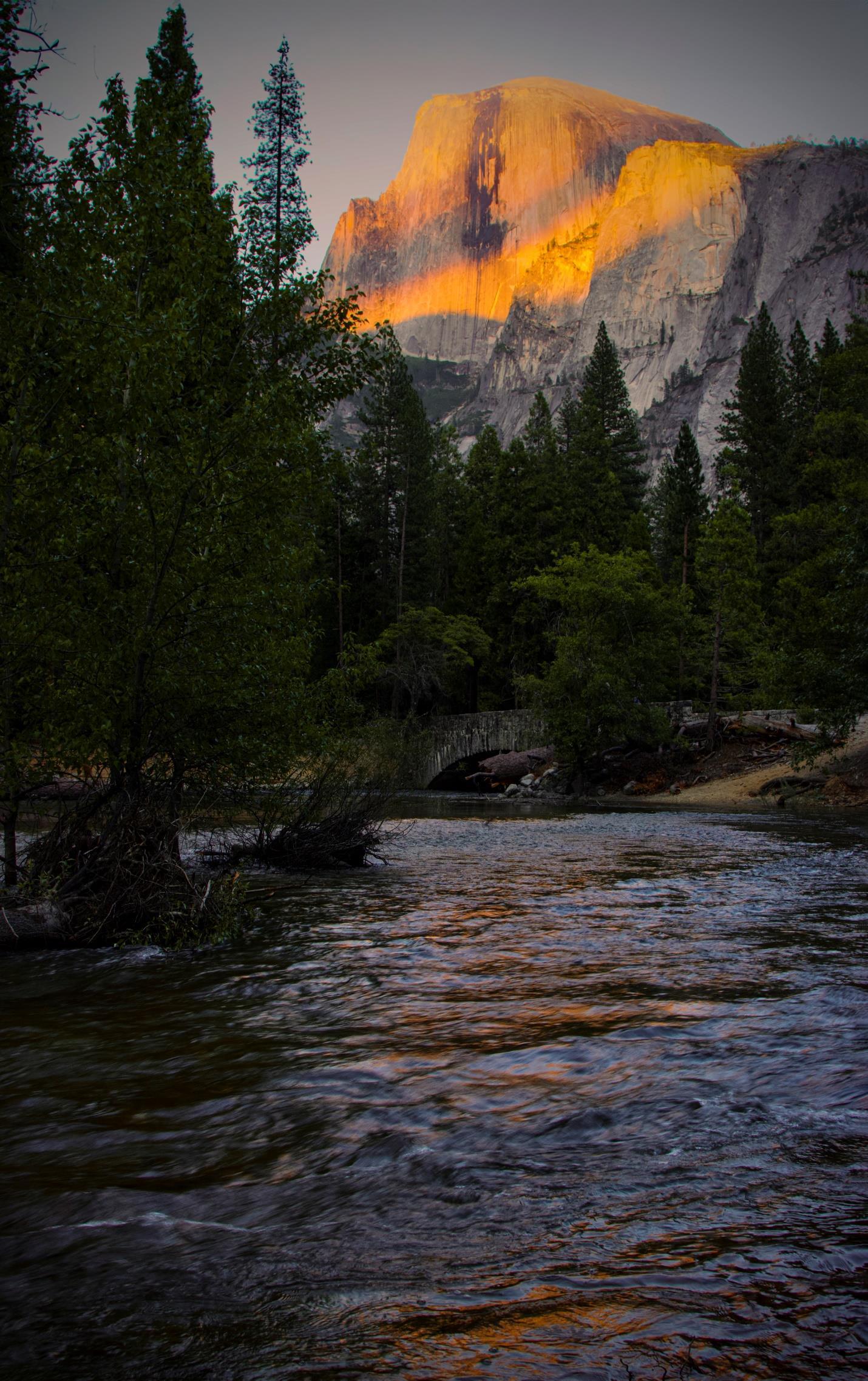
From our home base at the Ahwahnee Hotel, we began to explore the wonders of the valley by foot. The day started with a ranger talk this one about bears in the park.
Like most of the large creatures who live in Yosemite, bears are much more difficult to see these days, though some do wander into campsites and along trails occasionally. Most of the big animals have moved into the more remote wilderness sections of the park. We certainly saw the truth in that statement However, as Ranger Rebecca told us, the park does have a protocol for tracking bears and for educating visitors about possible encounters with them.
The tracking is done through collaring some of the bears so they can be followed by GPS signals and others have just ear tags naming them and linking the bear to the information stored about it: such as age, where last seen, health condition, breeding status and the like. Each bear is regarded as precious and the park endeavors to keep them all safe from poaching.
Human visitors are asked to keep all food, anything with smells such as deodorant, soaps, or spices in airtight containers and not left in cars since bears can easily break into a car. Campers especially are asked to be extra careful about keeping food clear of campsites. Suspending food in bags, if high enough, can discourage bears. We were asked to keep any food no further away from us than arm's length and to be sure to clean up areas where we have an alfresco picnic or even a snack. Our “chef” Sharon was very fastidious in following these rules whenever and wherever we dined outside.
Following the “bear care” lesson outside the Ahwahnee, Paola, a representative of the volunteer Yosemite Conservancy, talked to us about the support the organization provides to the park. Often the support is monetary to help with special park projects such as road & bridge repairs and even new restoration projects and supplying speakers to educate visitors about park history, the indigenous people who lived here before Yosemite was a park as well as ongoing improvements.
Then Paola led us all on a guided easy 2 hour walk through the valley pointing out plants with medicinal uses discovered by the indigenous peoples, round granite stones with almost perfect round holes on their surfaces which the native peoples had fashioned for mortar & pestle usages to grind the acorns of the black oak tree which was the most important staple of their diet.

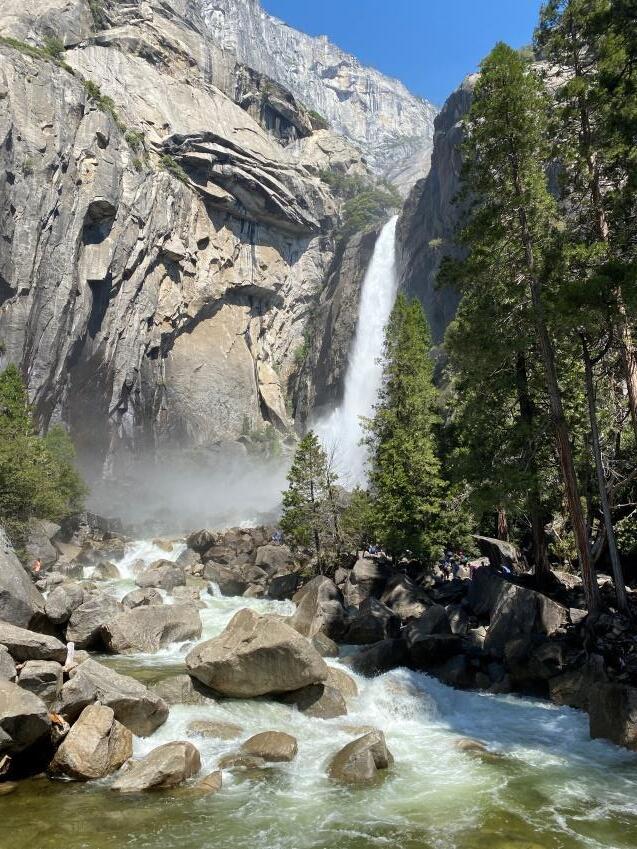
We walked to the base of Lower Yosemite Falls for wonderful views of the roaring snowpack charged waters. The volume of water was stupendous and the cascades were magnificent. How lucky we were to be in Yosemite as the voluminous snowfall was melting.
At Curry Village there are stores & businesses: a grocery store, delicatessen and other restaurants, the post office, the Ansel Adams Museum, Medical Clinic, Visitors Center and the Denham’s bakery where we enjoyed a good lunch. Paola was an enthusiastic and informative guide who enriched our visit to the Valley.
Between lunch and the next scheduled activity, we went into the Visitors Center to watch the splendid movie about the history of the park, the attractions, and the geology. The most surprising thing we learned from the movie is that the entire wall formation of the valley is one continuous piece of granite: El Capitan, Half Dome, and all the other mountains we see.
That was really hard to grasp but we looked at the formations differently after that piece of information. The formation was pushed up from the earth’s mantle by volcanic action and then glaciation and the Merced River created the U-shaped valley (glacier action) and then the V-shaped valley was created by the Merced. The geology here is also a “WOW as far as we are concerned. We also learned that the Valley is at 4000 ft. of elevation while El Capitan is 8839-ft tall and Half Dome tops out at 7,573 feet.
After the movie, we non-spicy hikers met with Jeanelle again and made a very interesting “mosey” through a restored meadow called Cook’s Meadow.

There is a boardwalk for walking around the meadow and walkers are asked not to walk anywhere except on the boardwalk, to avoid disturbing the plants and creatures living here. The meadow is named for John J. Cook who owned a hotel in the valley and grazed his cattle here from 1881 to 1887.
This wonderful “mosey” gave us more “wees” to enjoy. We saw Western Milkweed for Monarchs (very different from the milkweed we can find in Florida), red winged Blackbirds, butterflies we couldn’t name, insects, a tiny frog hiding in the marshy soil just below the boardwalk (we leaned over to see him; we did not step down), bees and even one dragonfly which just darted about and never landed. Later we read that dragon flies have 6 legs, but they cannot walk, so they rarely find it necessary to land either. I am not sure why we never knew that before because we have certainly enjoyed dragonflies all over the world.
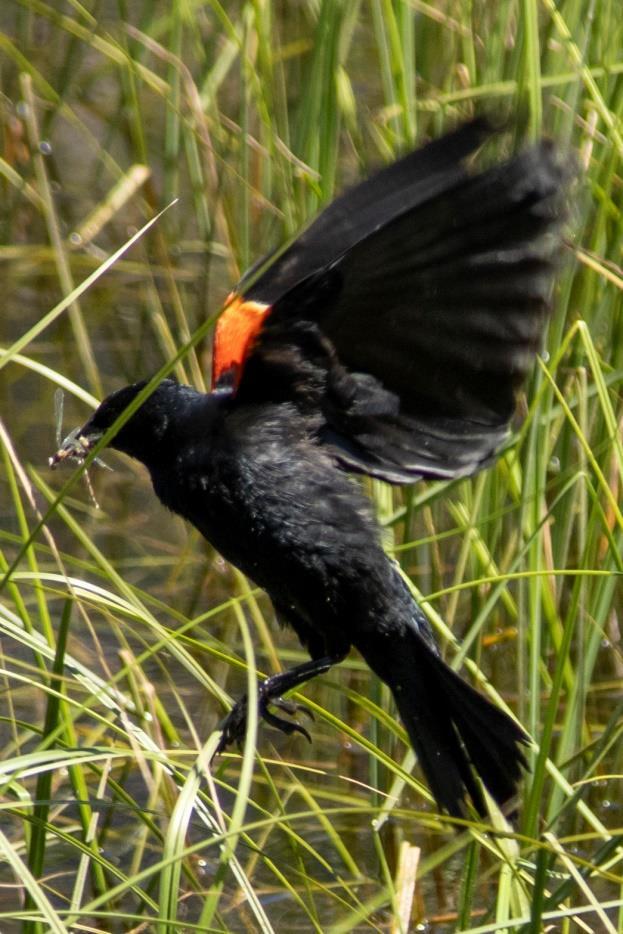
Our last activity in Yosemite Valley was a morning walk to Mirror Lake. The walk would not qualify as “spicy “because it was really easy except for a couple of rocky spots near the lake. The reflections of the surrounding forests and mountains were lovely, and Kay enjoyed the photography the Lake demanded. We saw a few ducks that we couldn’t name and wished we could have stayed longer. When the breezes picked up, ripples on the lake distorted the reflections but were still captivating. But on this hike, which was way longer going back by a different path, we were on a timed schedule.



We were driven to another huge and healthy meadow in front of El Capitan. The family wanted to do some serious hiking and they went off to that activity.

Telescopes were set up at the front part of the meadow so we could check out the climbers and there were two men we could watch. Their movements up the cliff face were painfully slow but of course, we did not want to see an accident, so their pace was fine with us. It was almost heart-stopping to see them transferring a huge and clumsy looking climbing bag from one level to another.
After we watched them for a while, we turned our attention to the meadow and worked our way down the path trying to find the “wee” things we expected to see there. And we did see some birds, insects, pine cones with living seeds inside, dragonflies and a little frog. We enjoyed the tension created by spying on the climbers and the peace of the pretty meadow and our “mosey” out among the plants and trees.

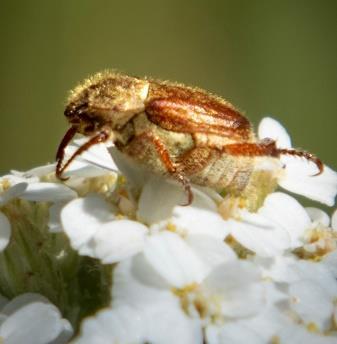
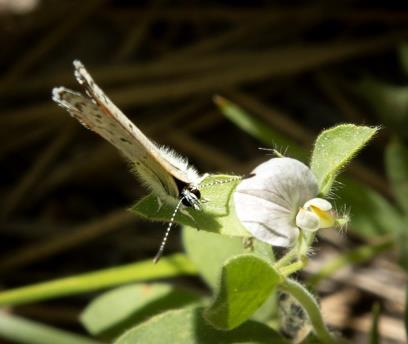

We had yet another “WOW” moment connected to sunsets. One evening, we had an alfresco supper with pizzas, soft drinks and cookies for dessert. Across a road from our picnic site was another meadow whose name we never learned. But once we had eaten our fill, we walked across the street and found a bench to sit on while the sun began its disappearance show. A young woman from Sacramento joined us while she awaited her young daughter who was playing in the meadow with other young kids. Though her drive from the California capital was not long, she had never visited this park before. She was enjoying the amazing scenery just as we were.
As the sun lowered the blinds even further, Kay got up and started to take serial photos as the sunset colors deepened and slipped away into darkness. It was truly magical to sit there watching that miracle of light. The color vibrancy and the setting next to El Capitan made this evening another big “WOW.”

The original plan for this end of the trip had been to drive over the Tioga Pass to spend some time in Tuolumne Gardens with a close look at Mono Lake Well, the winter’s extreme snowfall made a huge change in plans necessary. Tioga Pass has not been cleared of snow and probably won’t be open this entire season.
On the road to Sequoia NP, we stopped in the city of Mariposa to take in the Yosemite Climbing Museum. This wonderfully curated small museum which documents the long history of climbing in the park. It is run by climbing veterans who want their sport to be remembered and respected for its difficulty and its traditions. In the beginning, the park strongly discouraged the climbers because they feared damage to the rock faces, legal liability should a climber get hurt or even worse die in a fall. The early climbers were clearly
a rowdy bunch who stayed high on drugs most of the time, even on the most perilous shelves. As time went on, more serious climbers began to frequent the park, even athletes from Europe. The park service realized that they were playing a losing game and would never be able to stem the tide of wannabe climbers.
Their first step was to create a campsite exclusively for the climbers (Camp 4). Then they made some safety rules and had climbers sign in when they wanted to try to scale Half Dome or El Capitan. Major changes in the climbing equipment also reduced the fears of damage to the granite faces. Now pitons that create holes in the rocks are rarely used. And today, many rangers have joined the climbing community and have become avid climbers themselves. The museum does an excellent job of revealing the evolution of climbing as a sport. Many veteran climbers who no longer climb now donate time, money and old equipment to the museum so that the many phases of climbing history can be remembered. Two retired older climbers were our docents for this visit, so we got to hear some personal stories and memories too.
With some reluctance, we had left the Ahwahnee Hotel and Yosemite National Park and headed to Sequoia National Park. This is the park where The General Sherman Giant Sequoia lives and rules, as one of the largest trees on earth. Its vital statistics include the following facts:
1. Height 275 feet
2. Weight: 4.188783 lbs.
3. Age: between 2,200 and 2700 years
4. 36 ft diameter at foot of the tree
5. 5. Largest Known single stem tree in the world
Now if that isn’t a WOW, I don’t know what is!
The first time we ever saw the General Sherman was at least 30 years ago, about the same time we went to Yosemite the second time. Of course, it would be impossible for us to see any changes in the tree itself, but the alterations around it were many. We went in late summer and there was still snow on the ground when we pulled into the empty parking lot at the Visitor Center. We had been required to put chains on our tires before we entered the park. What did Florida gals know about those things? So, we stopped at a gas station before driving up into the park and the kind fellow there put them on for us.
Anyway, there we were. There was a sign pointing in the direction of the General Sherman tree and we walked right to it and muddled through the snow on the ground before
reaching the tree. Not a very long walk at all. Enough to get our shoes wet and our feet really cold. There it stood in solitary splendor with no other person around. We could have walked right up to it to touch the bark and there was no one around to say nay. Now we know that we should never have done that because footsteps can injury the shallow root system of these trees. We marveled at the size and height of the tree, took some pictures, and “that was that “as far as Sequoia National Park was to us then. We were anxious to leave the park because we were so fearful that snow might start falling again and get us snowed in. By the way, none of the slides we took back then survived Florida’s heat and humidity.

WOW what a difference a few years made! There is a large parking lot now and lots of people milling around. I’m not sure how this can be since our earlier walk was so brief, but the walk down to the General now is paved and steep with many short sections of steps besides. Once you arrive at the site, it is clear that you won’t be walking close enough to touch the bark or gather people around its base to test how many it will take to encircle the General with human arms. The tree of course is still immensely impressive and very hard to take in at one look because it is so tall and enormous.
Once again, we took pictures and since these are digital, we can hope they will survive.
Then we moved on to the next big tree: General Grant. It is reputed to be the 2nd largest Sequoia. It too is well protected from tourists, and it is also very hard to photograph and appreciate because it is so big. It actually sits in the Kings Canyon, part of the now twinned National Parks.
Visiting the dual park was on our last day of the trip and though it was still very hot and very full of people, we were glad to see that the mighty sequoias are being protected and appreciated by the public.

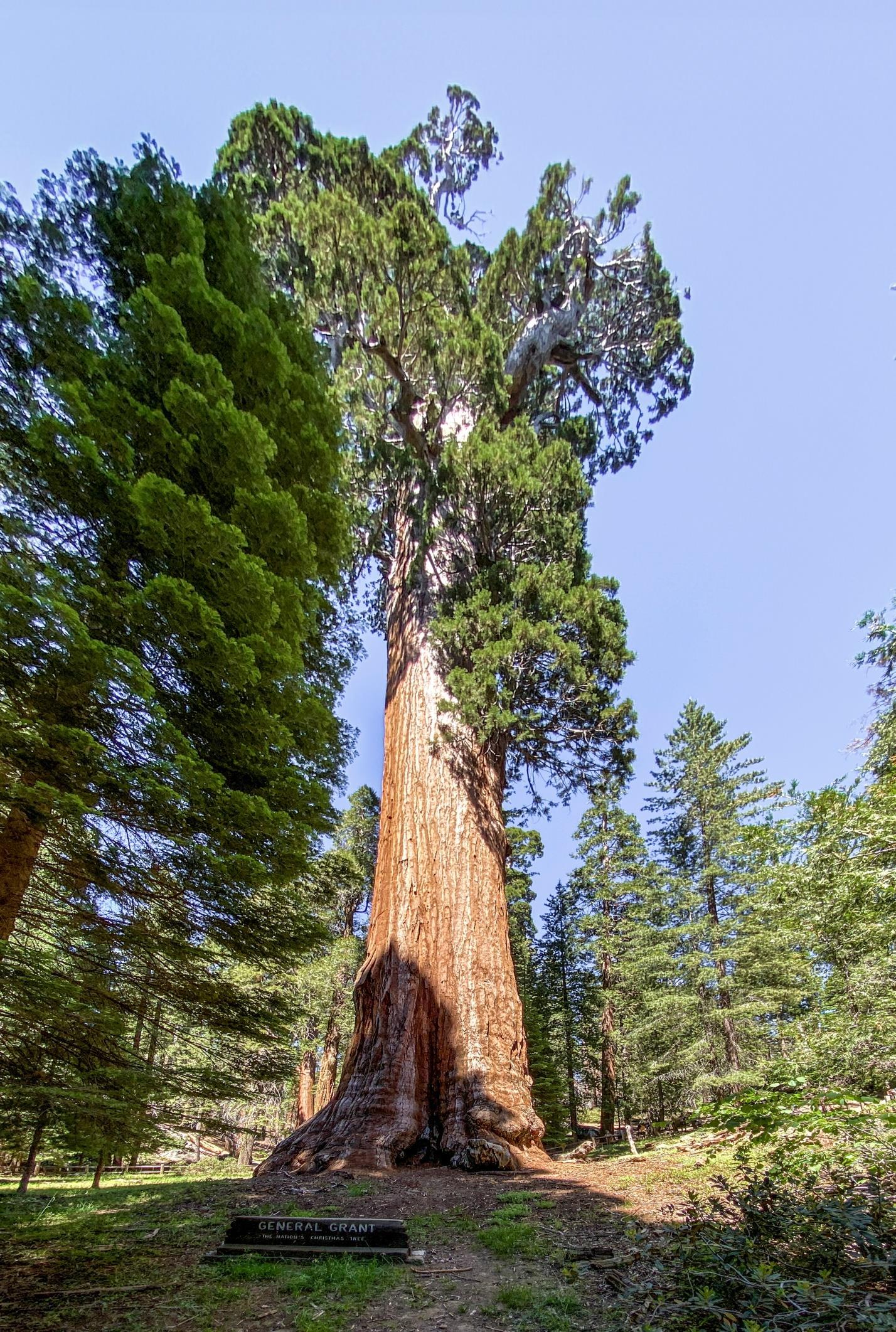
After that visit we were driven back to Fresno. We had some hours to kill before the first scheduled flights of our fellow travelers. So were were taken to a lovely city park with its arboretum. Though it was still very hot, there were some islands of shade and a slight breeze for comfort.


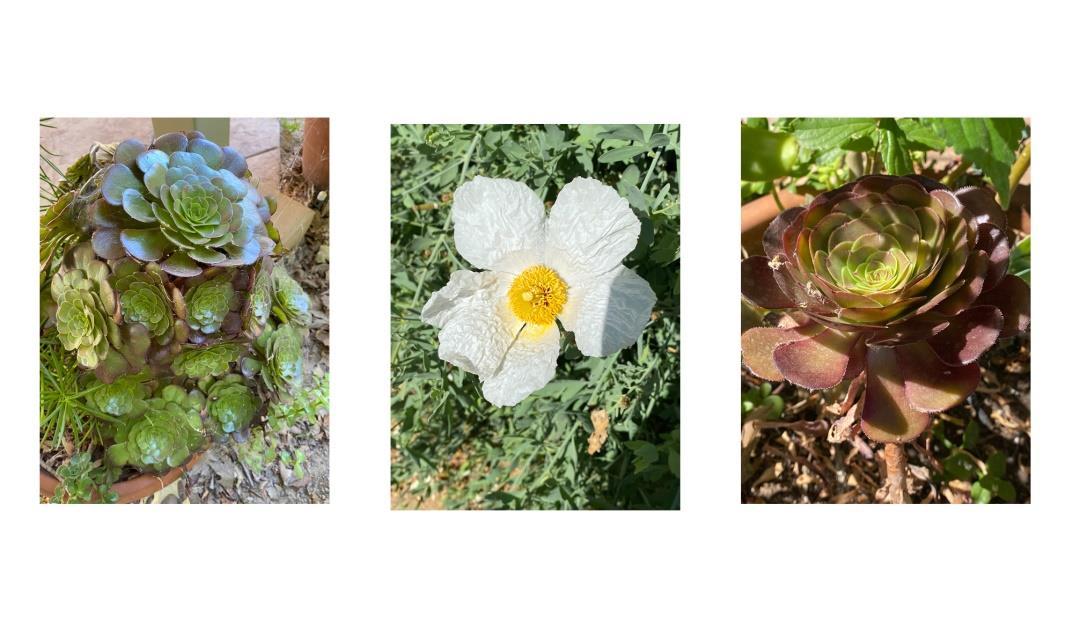
We finished the morning at an ice-cream parlor with air-conditioning, cold diet Coke and delicious chocolate chip ice cream with sprinkles!
Then we were let off back at our at Piccadilly Airport Hotel. This time, the front desk did not make us sit in the lobby to wait for the 3:00 p.m. check-in time. They let us go right to our room to wait for a very early flight from Fresno to Dallas/Ft Worth the next morning.
We had an acceptable dinner in the hotel restaurant and got all our stuff together and packed and ready for a wake-up call at 4:30 a.m. for our 6 a.m. flight. We requested the shuttle service and asked for a wake-up call so that we didn’t oversleep.
As usual, we were awake well before the call and it turned out that was a very good thing because we realized that no wake-up would have ever come because there was no phone in the room. I don’t think that surprise was a “Wee or a WOW.” Actually, it should be dubbed a “WHEW” because we escaped what could have been a really bad start to the trip home had we missed the first leg of the three flights it took to get back to Jacksonville. But it wasn’t a bad omen either because all our flights were on time and there were no problems about any of them. And the Lyft ride we had requested to take us home from the airport was also on time.
This was indeed another mighty enjoyable trip with Natural Habitat Adventures!